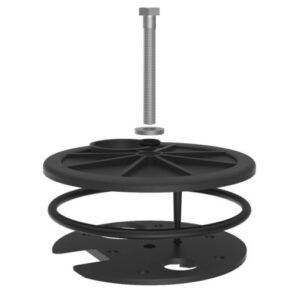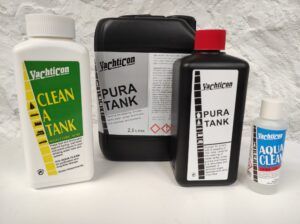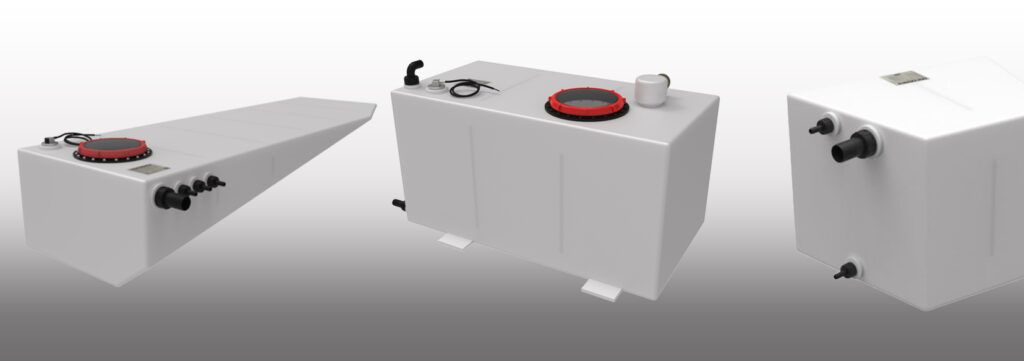Campervan Tanks, News
How to Effectively Clean a Boat, Caravan or Campervan Water Tank
A Comprehensive Guide to Sanitising Your Onboard Water System
Spring is in the air. The last frost has been and gone, so it is time to visit your boat, caravan, or campervan and prepare them for weekends away and holidays. As it is paramount that the water on board is safe to drink, one of the most important jobs is ensuring your water system is clean, sanitised, and ready for action. This guide on how to clean a boat, caravan or campervan water tank will cover how to ensure your water system is in tip-top condition. We will talk you through the easiest way to clean your water tank and sanitise your entire onboard water system.
How to Clean a Boat, Caravan or Campervan Water Tank
Blog Outline:
1. Before We Start.
2. When to Clean an Onboard Water Tank System.
3. Cleaning Your Boat’s Water Tank.
4. Filling Your Water Tank.
5. How to Clean a Boat, Caravan or Campervan Water Tank – Summary.
1: Before We Start.
Before we start the cleaning process, here is an excellent opportunity to check over all the components of your water system. Time spent here could save you valuable time when you are away.
Check the condition of all the water system components. The outside walls of your hoses and pipework may look good, but the insides could be clogged up with scale. Minerals in the water can accumulate and create scale deposits which adhere to the tank and hose walls and, in time, restrict the water flow. A regular cleaning regime will prevent scale build-up and prolong the life of your water system.
Inspect the pre-pump strainer, remove any particles, and check the filter screen and O Ring seals. Inspect your water pump to check for signs of wear or damage, and replace any damaged or worn parts where necessary and reassemble.
2: When to Clean an Onboard Water Tank System.
It’s good practice to periodically lift the inspection hatch and check on the condition of your tank. Although perfectly safe to drink, It’s common for mains water to carry the odd grain of sand or grit which will collect on the bottom of your tank. These particles will be caught by your pre-pump strainer and water filter.

If you haven’t got one, consider installing an inspection hatch. Retrofit inspection hatches, like Clear Henderson “TCL4” or Wema “FLB“, are available and are easy to fit. These will allow you to quickly check the condition of your tank and add a cleaning solution when required.
Don’t risk the health and safety of your loved ones! It’s crucial to clean your freshwater tank and system at least once a year. And if you notice any unusual taste, milky appearance, or strange odour in your water, don’t hesitate to take action! It’s time to thoroughly clean and sanitise your water system to keep it in top condition.
3: Cleaning Your Boat’s Water Tank.
Various methods can be used to clean a boat’s water tank. By far, the simplest way to clean your tank and water system is to let the chemical do the work for you.
Some use a diluted domestic bleach solution which will do the trick. Bleach left to sit will sanitise a water system, but it won’t break down and remove any scale in your tank and pipelines. Bleach can affect certain plastic and metal parts within a water system, not to mention the pump’s rubber diaphragms and seals.
The best practice for cleaning a boat’s water tank is to choose non-toxic and biodegradable water tank cleaning chemicals. Here are some reasons why:
- Safe for the environment.
Biodegradable chemicals are formulated to break down naturally and don’t contain harmful ingredients that can harm the environment. They are a safe option for cleaning your boat’s water tank without compromising the ecosystem.
- Effective against bacteria and contaminants.
Biodegradable chemicals are specially formulated to kill bacteria and eliminate contaminants that can cause odours or make the water unsafe. They can penetrate and break down organic matter and debris inside the tank, making it easier to remove them.
- Easy to use.
Biodegradable chemicals are often designed to be easy to use, requiring minimal effort on your part. Simply add the recommended amount of chemicals to the tank, let it sit for a recommended amount of time, and then rinse the tank thoroughly.
- Non-corrosive.
Biodegradable water tank cleaning chemicals are typically non-corrosive, meaning they will not damage or corrode the materials they come into contact with. This feature makes them safe for use on metal components of the water tank, such as the tank itself or the fittings and valves.
- Non-abrasive.
Biodegradable water tank cleaning chemicals are designed to be non-abrasive, meaning they will not damage the plastic components of the water tank system. This includes plastic fittings or hoses used in the water supply system.
A couple of products that we know are excellent are Yachticon’s Clean A Tank and Pura Tank.

For a deep clean, simply follow the Clean A Tank instructions, dissolve the required crystals in some warm water and pour it into your tank. Using the pump deliver the chemical to every faucet and leave it to sit for a few hours. Clean A tank is excellent for dissolving calcareous deposits in your tank and pipework. Once the time is up, empty the tank and flush the system through a couple of times.
Job done! Your boat’s water tank is now clean and sanitised, ensuring the health and safety of your family and friends.
Use Pura Tank twice a year to keep your water system in tip-top condition.
4: Filling Your Water Tank.
Make sure the water source that you will use to fill your tank is safe. Consider carrying your own filling hose complete with an inline pre-filter. A pre-filter will help to prolong the life of your onboard water supply and prevent sediment particles from entering the water tank.
Keep some water purification tablets or liquid on board. Aqua Clean is a good one; it will sterilise your water for up to six months.
5: How to Effectively Clean a Boat, Caravan or Campervan Water Tank. Summary.
Maintaining a clean water system in boats, caravans, and campervans is essential for the safety of the occupants. Inspecting the water system components for any signs of wear or damage before starting a water tank cleaning process is necessary. The easiest and most effective way to clean a boat, caravan or campervan water tank is by choosing non-toxic and biodegradable cleaning chemicals that are safe for metal, plastic, and rubber components. Using non-corrosive, non-abrasive and environment-friendly products like Clean A Tank and Pura Tank for deep water tank cleaning and maintenance, filling the tank with safe water sources and carrying water purification tablets or liquid on board is a good practice.



